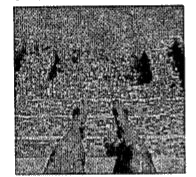State the Snell's laws of refraction of light.
Step-by-Step Solution:
1. Understanding Refraction: Refraction is the bending of light as it passes from one medium to another due to a change in its speed.
2. Angles Involved: When light travels from one medium to another, two angles are defined:
- The angle of incidence (i): This is the angle between the incident ray and the normal (a line perpendicular to the surface at the point of incidence).
- The angle of refraction (r): This is the angle between the refracted ray and the normal.
3. Snell's Law Statement: Snell's Law describes the relationship between the angles of incidence and refraction when light passes between two different media. It states that:
sin(i)sin(r)=n
where:
- sin(i) is the sine of the angle of incidence,
- sin(r) is the sine of the angle of refraction,
- n is the refractive index of the medium.
4. Refractive Index: The refractive index (n) is a constant that depends on the two media involved. It quantifies how much the speed of light is reduced in a medium compared to its speed in a vacuum.
5. Conclusion: Snell's Law is crucial for understanding how light behaves when transitioning between different materials, and it is fundamental in optics.
---
- The angle of incidence (i): This is the angle between the incident ray and the normal (a line perpendicular to the surface at the point of incidence).
- The angle of refraction (r): This is the angle between the refracted ray and the normal.
sin(i)sin(r)=n
where:
- sin(i) is the sine of the angle of incidence,
- sin(r) is the sine of the angle of refraction,
- n is the refractive index of the medium.
Topper's Solved these Questions
- REFRACTION OF LIGHT AT PLANE SURFACESBook:ICSEChapter:REFRACTION OF LIGHT AT PLANE SURFACESExercise:EXERCISE-4(A) MULTIPLE CHOICE TYPE
Explore 3 Videos
- REFRACTION OF LIGHT AT PLANE SURFACESBook:ICSEChapter:REFRACTION OF LIGHT AT PLANE SURFACESExercise:EXERCISE-4(A) NUMERICALS
Explore 4 Videos
- REFRACTION OF LIGHT AT PLANE SURFACESBook:ICSEChapter:REFRACTION OF LIGHT AT PLANE SURFACESExercise:EXERCISE-4(D) MULTIPLE CHOICE TYPE
Explore 3 Videos
- REFRACTION OF LIGHTBook:ICSEChapter:REFRACTION OF LIGHTExercise:DIAGRAM BASED MCQ:
Explore 5 Videos
- REFRACTION THROUGH A LENS Book:ICSEChapter:REFRACTION THROUGH A LENS Exercise:EXERCISE-5(D) (MULTIPLE CHOICE TYPE)
Explore 2 Videos
Similar Questions
When a ray of light from air enters a denser medium, it :
View SolutionThe speed of light in air is 3×108ms−1. Calculate the speed of light in glass. The refractive index of glass is 1⋅5.
View SolutionThe critical angle for glass-air interface is :
View SolutionName the phenomenon occurring in the following figure:

View SolutionA magnifying glass forms:
View SolutionDefine Snell's law of refraction.
View Solutionप्रकाश के अपवर्तन का स्नैल का नियम लिखिए।
View SolutionState Snell's law.
View SolutionState Snell's law of refraction of light?
View SolutionUsing Huygen's wave theory of light , derive Snell's law of refraction.
View SolutionIn refraction of light, what does Snell's law state ?
View SolutionRefraction Of Light And Snell'S Law
View SolutionDefine refraction of light. State Snell's law of refraction of light.
View SolutionArrive at Snell's law of refraction, using Huygen's principle for refraction of a plane wave.
View SolutionState Snell's law of refraction of light.
View Solution